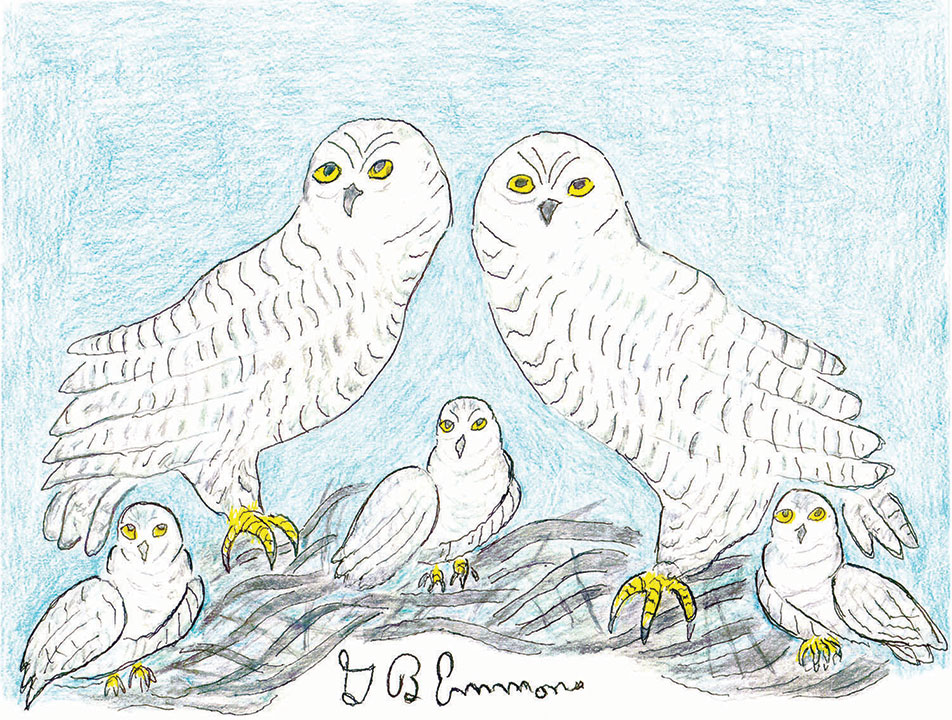Snowy owls have not been arriving to prominent coastal points of Buzzards Bay as usual on the wings of the Winter Solstice, crossing over from Cape Cod as annually reported by the Falmouth Christmas Bird Count. This bird count happens to be the longest-running science survey in the world and has reported only several snowy owls so far this season. They usually have appeared by now along the South Coast of Buzzards Bay where I have witnessed them near Pine Island on Angelica Point, at the beach on West Island, and the Slocum peninsula in South Dartmouth. Seeing a snowy owl is an unforgettable bird watching experience.
One of the larger owl species, the snowy owl is clearly identified by its ghostly white, often sitting near the same place as before. It is a still hunter, playing a waiting game, able to turn its head 270 degrees. It possesses an almost extrasensory hearing to locate movement of a vole under the snow. Its yellow eyes make it capable of both diurnal day and night vision – almost extrasensory.
It has been widely believed that southern migration to our tundra-like landscape is directly related to yearly cycles of abundance or shortage of the artic staple diet, lemmings. The last huge migration was reported in 1993 with two or three times the normal sightings. Another was in 1942 when thousands suddenly appeared migrating south from Canada across the Great Lakes into the northern states in the center of the country. Such a sudden phenomenon caught the undivided attention of scientists who labeled it a migration “irruption” requiring further scientific exploration of its cause and effect.
An advanced bird banding and high-tech GPS micro-transmitter use for location movement was begun to track movement, an operation dubbed “Operation Snowstorm.” Surprising results of this research soon revealed that snowy owls frequently migrated at high altitudes from year to year, some to as far south as Florida while broadening their distribution along the way. Some were dangerously sitting on fences near the runway a Washington D.C. airport, on city houses, cars, park benches, and even ledges of skyscrapers. However, so far this year, findings report exactly the opposite is true with a downside of the cycle. There are only a few on Plum Island north of Boston, usually a popular stopping point during migration. Only one bird was spotted on Martha’s Vineyard, one on Nantucket, one at Duxbury Beach, one at Provincetown, and one at Monomoy – but none at all in Bristol County.
Snowy owls have been on Earth for 50 million years, and mating pairs can successfully reproduce on three or more occasions annually, as illustrated, to live as long as 20 years under favorable conditions. However, their connection to changing arctic ecosystems is a sensitive focus of environmental awareness.
Their symbolism has evolved down through the ages and ancient cultures, such as the northern Tinglit Indian totem figures. They were called a nighttime eagle with connections to phases of the moon. In modern literature, when J.K. Rowling was asked why she included the snowy owl in her Harry Potter books, she said it was because they were mysterious symbols of supernatural narrative and she liked them.
The year 2020 is the Chinese year of the rat, and it seems it might also be the off-year of the snowy owl for local bird watchers. Still, staying true to its unpredictable behavior, a snowy owl might suddenly pop up to pleasantly surprise you.
By George B. Emmons
